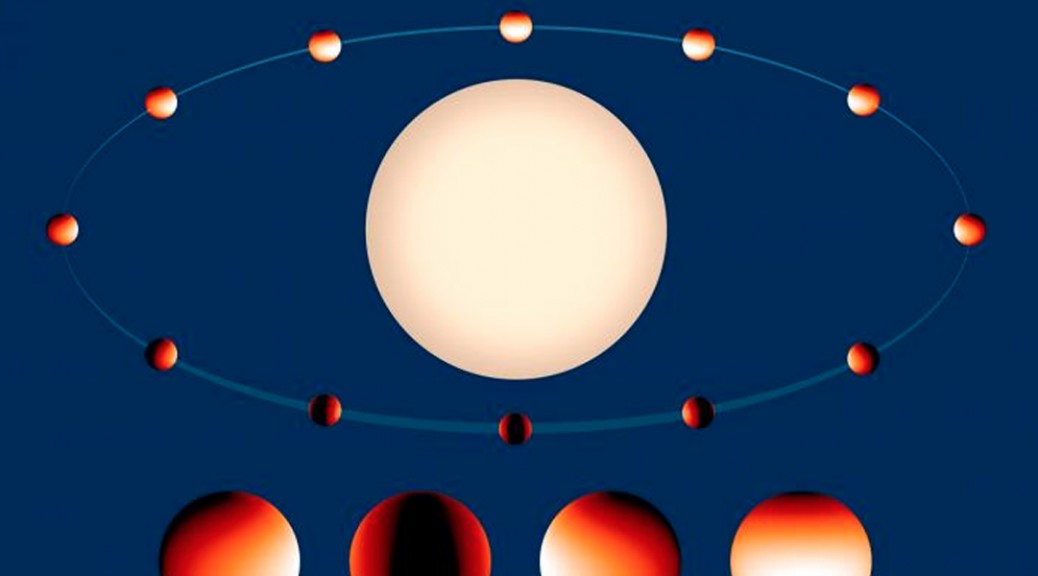
NASHVILLE, Tenn. (TSU News Service) – When it comes to understanding the stars and galaxies, scientists at Tennessee State University continue to play key roles in major discoveries and breakthroughs.
Just this week, TSU astronomers Gregory Henry and Michael Williamson were part of a team of astronomers that announced they had made the most detailed map ever of the temperature distribution of an exoplanet’s atmosphere, and traced the amount of water vapor it contains.
Both results were made from data collected using instruments on board the Hubble Space Telescope. The planet targeted for both of the investigations was the hot-Jupiter exoplanet referred to as WASP-43b.
TSU operates a unique array of robotic telescopes located in the Patagonia Mountains of southern Arizona that have gained international recognition for the research programs they have accomplished, including the discovery of planetary systems around other stars in 1999.
In their latest effort, Henry and Williamson, working on a study headed by Jacob Bean, of the University of Chicago, used one of the TSU automated telescopes to make a long series of nightly measurements of the planet’s host star’s brightness.

“The planet’s host star is some 70 percent smaller and cooler than our own sun, but, like the sun, exhibits the coming and going of cooler regions on its surface called starspots,” said Henry, who headed the team in the 1999 discovery of a new planetary system. “These starspots are analogous to the dark sunspots seen on the sun and that come and go with the 11-year sunspot cycle.”
He said the starspots cause continuous, subtle changes in the brightness of the star. To enable the construction of an accurate temperature map of the planetary atmosphere, the calibration of the Hubble Space Telescope measurements of the planet’s atmosphere must include the effects of the star’s changing brightness.
“The WASP-43b result is indeed interesting, given that this planet is unique among the nearly 2,000 known exoplanets in that it has the shortest period of revolution around the star: only 19 hours. This period defines the length of the planet’s year, compared to 365 days for our earth,” Henry said.
“Our observations are the first of their kind in terms of providing a two- dimensional map of the planet’s thermal structure,” added Kevin Stevenson, also of the University of Chicago. “These maps can be used to constrain circulation models that predict how heat is transported from an exoplanet’s hot day side to its cool night side.”
To make the map more detailed, the team also measured the water abundances and temperatures at different longitudes. To do this, Henry and his colleagues took advantage of the precision and stability of Hubble’s instruments to subtract more than 99.95 percent of the light from the parent star, allowing them to study the light coming from the planet itself — a technique called emission spectroscopy. By doing this at different points of the planet’s orbit around the parent star, they could map the atmosphere across its longitude.
“We have been able to observe three complete rotations — three years for this distant planet — during a span of just four days,” explained Bean. “This was essential in allowing us to create the first full temperature map for an exoplanet and to probe its atmosphere to find out which elements it held and where.”
Finding the proportions of the different elements in planetary atmospheres provides vital clues to understanding how planets formed.
Department of Media Relations
Tennessee State University
3500 John Merritt Boulevard
Nashville, Tennessee 37209
615.963.5331
About Tennessee State University
With nearly 9,000 students, Tennessee State University is Nashville’s only public university, and is a comprehensive, urban, co-educational, land-grant university offering 42 undergraduate, 24 graduate and seven doctoral programs. TSU has earned a top 20 ranking for Historically Black Colleges and Universities according to U.S. News and World Report, and rated as one of the top universities in the country by Washington Monthly for social mobility, research and community service. Founded in 1912, Tennessee State University celebrated 100 years in Nashville during 2012. Visit the University online at tnstate.edu.
